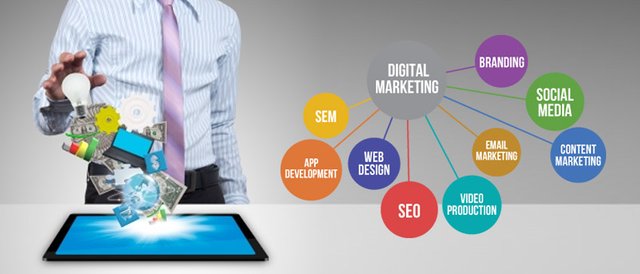WHY DIGITAL MARKETING IS FAILING
7 Essentials for Any 2018 Digital Marketing Strategy
Digital marketing strategy is crucial to most modern businesses. Is yours following these best practices?
In today's tech landscape, a solid digital marketing strategy has become the CMO's new bread and butter; the only question now is how to best serve it up. Your business's success depends on the right type of strategy, and the right type of strategy can in turn lead to higher sales, new customers, and long-term growth.
Traditional online advertising is a thing of the past. Why? Bottom line, it's more annoying than effective. One study found that 18- to 34-year-olds are likely to ignore online banner and digital ads more than those on TV and radio or in newspapers. What's more, 54 percent of internet users don't click on banner ads simply because they don't trust them.
It's now a CMO's job to stay ahead of the digital marketing curve, keep up-to-date on trends, and break through the clutter. Here are seven tips to optimize your digital marketing strategy.
Prioritize customer needs over bells and whistles.
While your team is consumed with building your web presence and developing your product or service, it's easy to lose sight of the customer you want to target. "When building a brand online, too many people rush to buy ads and acquire traffic to drive revenues by brute force," says Tony Delmercado, co-founder and COO of Hawke Media. "Small efficiency improvements in conversion rates, email capture, and retargeting can pay huge dividends -- tighten up the mouse trap first, then buy eyeballs. You'll acquire and retain customers more cost-efficiently and keep money in your coffers for higher-risk marketing strategies."Audit and update your SEO more frequently.
You may know your product or service is great, but is it reaching all the people it could be? Search engine optimization can significantly help your brand reach the people who want what you're offering. Industry experts recommend updating your SEO once a quarter; after all, Google updates its algorithm more than 500 times a year. Find the keywords that are making your business gain or lose traction in the search engine cycle in order to make your brand as discoverable and searchable as possible.Prioritize blogging as a lead generation tool.
Speaking of SEO: Posting relevant and valuable content drives traffic to your website and social media pages, while also increasing your ranking in search engines. In fact, marketers who blog are 13 times more likely to experience positive return on investment, and companies that blog generate 67 percent more leads than those who don't.
Each post you create is one more indexed page on your website, making it more likely customers will find you when searching online. It also indicates to search engines that your website is active, which will help surface your content to the top of search engine results. Further, blogging gives your brand a voice, and 91 percent of consumers say they are more likely to buy from a brand that is authentic rather than generic.
Host high-quality webinars and live events.
There are a variety of digital marketing resources you can use to engage with your audience, including webinars, podcasts, and online promotion of live events. To streamline the process of event promotion, try using a third party to make the process seamless. Event technology platforms like Eventbrite help brands create and market an event, as well as promote ticket sales and manage their audience. By getting some external help with the details, you can focus on the big picture and create an experience your customers will remember long after it's over.Expand and refine your email distribution efforts.
Email marketing is still one of the best ways to reach your audience, and the fact that it costs nearly nothing to execute makes it one of the best tools to add to your toolkit. Email open rates have increased 180 percent on mobile devices since 2014, and more than half of all U.S. cellphone owners access their email on their phone rather than a desktop.
Email works better than other mobile forms of notifications (like text messages) because they don't cost the consumer anything, can be accessed on devices other than phones, and have more space to deliver a message. Emails keep your audience engaged across platforms, which in turn helps keep your brand top of mind.
Don't give social media short shrift.
Social media has become one of the biggest tools for marketing any brand. By first finding out what platforms your audience uses, you can then target your posts to the best times and dates to share. Engage with your audience on social media by starting conversations and responding to both praise and grievances. Sixty-seven percent of consumers use social media for customer service inquiries, so make sure that you become a part of that narrative so that you can direct it to a positive outcome.Make your marketing mobile.
Even if a desktop version of your marketing content looks great, be sure to check that it translates across devices. Consumers expect cohesion across platforms, and the better accessibility you provide your audience, the more likely they are to purchase.
Remember that authenticity reigns supreme in any of these strategies. Once you have that, an online presence allows you to connect with your audience in ways previously unknown and build a brand that they'll continuously want to engage with.